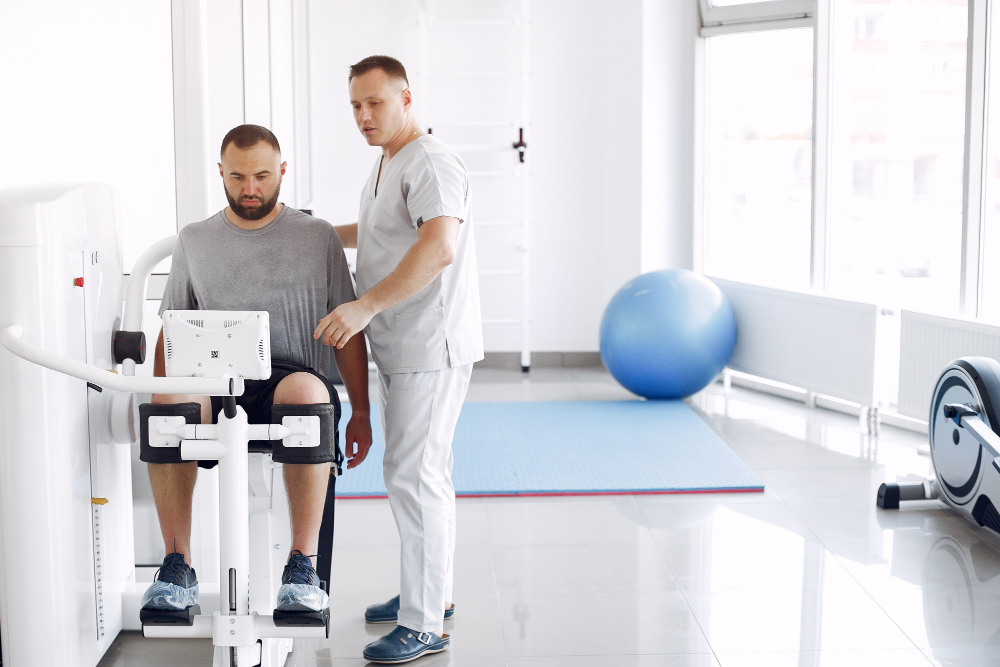The Importance of Physical Therapy After a Knee Replacement Procedure

The purpose of a knee replacement procedure is to reduce pain and improve mobility to enable an improved quality of life. Many patients assume that on successful completion of the surgery, the issue is solved. However, successful surgery is only a part of the solution.
In spite of the surgeon’s best efforts, to fully benefit from the surgery, the patient too has an important part to play – performing physical therapy as taught by the therapists for the duration specified by them is crucial for recovery.
Understanding the Benefits of Physical Therapy
Physical therapy is needed to prevent the formation of scar tissue after surgery. It strengthens the muscles surrounding the operated joint and helps in recovery.
Listed below are the many benefits of performing physical therapy:
- Pain relief
- Improves range of movement by promoting flexibility
- Controls swelling
- Aids in blood circulation
- Improves stability and helps in fall prevention
- Bolsters the muscles around the joint
- Reduces the need for pain killers
- Helps get back to a normal, independent life
Rehabilitation Starts Immediately After Surgery
- While it may be surprising to many, it is indeed best to start the process of rehabilitation on the very day of surgery completion once the patient has recovered from the effects of anesthesia.
- With the help of an assistive device (cane, crutches, etc.) the patient will be made to stand up and move around a bit.
- For daily activities, the staff will help, be it using the toilet or changing clothes.
- The physical therapist will also advise on the best way to get in/out of bed, how to use the toilet and other ways to move around with minimum discomfort.
- On the second day, the therapist will want the patient to try climbing a few stairs. The patient is usually asked to move to the toilet on his own (with the help of the assistive device).
- Usually, on the third day after surgery, the patient is discharged. However, this does depend on individual patients and their activity levels.
- The patient should be able to walk and maybe even climb a flight of stairs. The dependence on assisted devices should be comparatively lesser by now.
- The doctor will reduce the dosage of pain killer medication.
- The knee’s flexibility will be pushed a bit further as the therapist concentrates on increasing the range of movement.
- The physical therapist will go through all the rehabilitation exercises that the patient will have to do after discharge.
In 3 Weeks
- Reduction in pain should become apparent by now.
- Activities at home get easier day by day.
- Reliance on the assistive device too decreases.
- From around the 4th week after discharge, the patient can consult the doctor about returning to work.
- Driving around independently can commence if the doctor thinks it advisable. It is essential to get the doctor’s permission for this.
Three Months Post-Surgery
- Walking without the assistive device should be possible now.
- Carrying out a daily routine should not pose a problem.
- Low impact activities can be carried out comfortably. Consulting the physical therapist before embarking on any new activity is recommended.
- High impact activities are best avoided to protect the knee implant.
- Your exercise schedule will be modified as your recovery improves.
Dangers of Omitting Physical Therapy
Failing to adhere to the physical therapy plan might result in the following:
- Longer Healing Period: Blood circulation is necessary for the healing of the surgical site. Physical therapy mobilizes the muscles and joints and gets the blood flowing. Thus, it enhances the healing process.
- Injury to the New Joint: Physical therapy will teach the person how to start moving with the new joint. This is essential as otherwise the patient might end up causing injury to the joint. Especially for patients who have been suffering from chronic knee pain, movement therapy will help immensely.
- Injury to the Supporting Muscles: Often after surgery, to reduce the load on the operated area, the parts around it will try to take up that load. This leads to imbalance and should be avoided. Physical therapy helps in preventing this.
- Chances of Revision Surgery: If the operated knee suffers injury again due to improper movement, a revision surgery might be required. Such revision surgeries are complicated and are best avoided. Physical therapy will aid in strengthening the joint and as a result reduce the chances of injury.
A Few Pointers
- Every surgery is different and hence so is the post-operative recovery. Depending on the procedure, the exercises to be performed after surgery will vary from patient to patient. The doctor and the physical therapist are the best people to guide patients through this. Avoid comparison with someone else who has undergone a similar procedure.
- While staying active is important, so is getting sufficient rest. Follow the physio’s instructions and avoid over-doing anything.
- Physical therapy will not be easy and will definitely involve some effort but pain during exercise is not a good sign. If pain is experienced, it is better to stop exercising and check with the therapist. Chances are the exercise is not being done properly.
Moving Forward
Around 6 months to a year after the knee replacement procedure, with proper physical therapy, most patients will be able to lead a pain free life. All the hard work of the previous few months pays off during this period as patients are able to appreciate the mobility the new knee offers. It is important to have periodic reviews with the doctor to make sure any incipient problems are detected.
